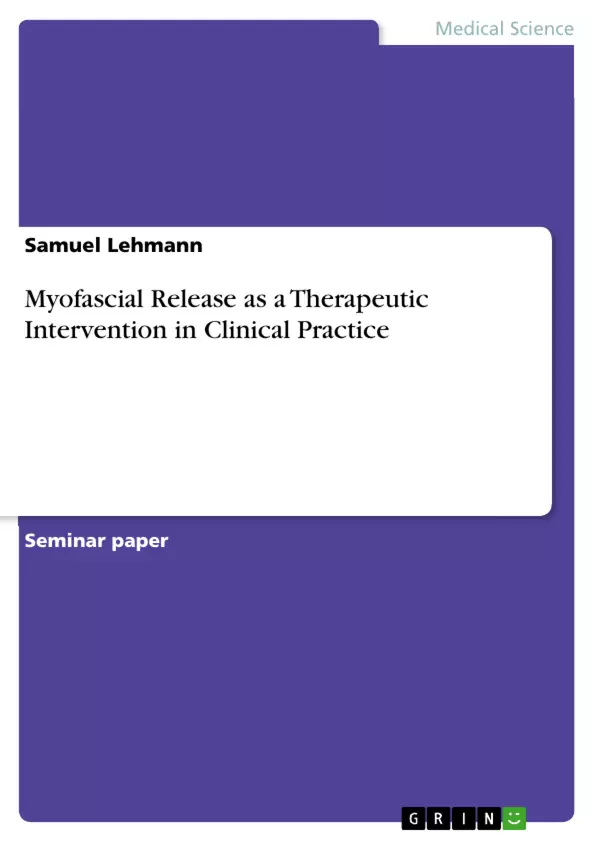When considering the evidence presented by a range of peer reviewed studies, it is reasonable to accept the validation of MFR as an effective therapeutic technique. The efficacy of MFR across a wide scope including multiple pain conditions and ROM was highlighted, especially in cases where MFR was applied in conjunction with alternate intervention strategies such as dry needling, static stretching and SBE. Limitations of each investigation, such as the lack of long-term assessment, were identified and raised concerns regarding the reliability of the clinical evidence. However, the analysis of each limitation established directions of future studies as opposed to discrediting the evidence. According to currently available literature, it can thereby be concluded that MFR should be applied as a therapeutic intervention and component of multi-modal treatment strategies in clinical practice.
Inhaltsverzeichnis (Table of Contents)
- Introduction
- Ethics
- Literature Analysis
- Conclusion
- References
Zielsetzung und Themenschwerpunkte (Objectives and Key Themes)
This report aims to critically analyze existing research on the effectiveness of myofascial release (MFR) as a therapeutic treatment for various pain conditions, specifically Fibromyalgia Syndrome (FMS), Carpal Tunnel Syndrome (CTS), Chronic Lower Back Pain (CLBP) and Plantar Fasciitis (PF), as well as its impact on increasing muscle range of motion (ROM). The report will evaluate whether MFR should be incorporated into clinical practice based on the evidence gathered.
- The efficacy of MFR as a therapeutic treatment for pain conditions.
- The role of MFR in improving muscle range of motion.
- Ethical considerations surrounding the use of MFR in physiotherapy practice.
- The limitations and future directions of MFR research.
- Comparison of MFR with other treatment modalities.
Zusammenfassung der Kapitel (Chapter Summaries)
- Introduction: This chapter introduces the concept of myofascial release (MFR) as a form of massage therapy that aims to relieve pain and restore function by manipulating fascial tissue. It highlights the ongoing debate about the efficacy of MFR due to a lack of conclusive evidence and explores the need for further research.
- Ethics: This chapter discusses the ethical considerations involved in the application of MFR in physiotherapy practice. It emphasizes the importance of adhering to ethical guidelines such as informed consent, beneficence, non-maleficence, and justice. Concerns regarding the ethical practice of MFR are raised based on a review of relevant literature.
- Literature Analysis: This chapter provides a detailed analysis of existing research on the effectiveness of MFR in treating specific pain conditions, including FMS, CTS, CLBP, and PF. It examines the findings of different studies and explores the strengths and limitations of each research approach. The chapter also discusses the potential for combining MFR with other treatment modalities.
Schlüsselwörter (Keywords)
Myofascial release, pain management, Fibromyalgia Syndrome (FMS), Carpal Tunnel Syndrome (CTS), Chronic Lower Back Pain (CLBP), Plantar Fasciitis (PF), muscle range of motion (ROM), ethical considerations, informed consent, physiotherapy practice, evidence-based medicine, treatment modalities.
- Arbeit zitieren
- Samuel Lehmann (Autor:in), 2019, Myofascial Release as a Therapeutic Intervention in Clinical Practice, München, GRIN Verlag, https://www.hausarbeiten.de/document/903775


